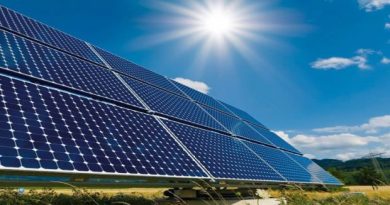Covid19 and the Oil Crash Impact on Sustainability. The Good And The Bad

Even as China, at enormous personal sacrifice of it citizens and its economy, has played a role in bringing down its carbon emissions by an estimated 25 percent since January 2020, thanks to the lockdowns caused by the Covid 19 virus and related changes, comes the oil price shock. A drop in oil prices by over 30 percent in 2020 would normally have been seen as just the natural market reaction to the slowdown, and an effort to bring ‘balance’ back. But this time, the oil price crash my not quite have the same effect.
Estimates from carbonbrief, a site dedicated to tracking carbon emissions and their impact states that the measures to contain coronavirus have resulted in reductions of 15% to 40% in output across key industrial sectors. This is likely to have wiped out a quarter or more of the country’s CO2 emissions over the past four weeks, the period when activity would normally have resumed after the Chinese new-year holiday. Over the same period in 2019, China released around 800m tonnes of CO2 (MtCO2), meaning the virus could have cut global emissions by 200 MtCO2 to date.
Initial analysis from the International Energy Agency (IEA) and Organization of the Petroleum Exporting Countries (OPEC) suggests the repercussions of the outbreak could shave up to half a percent off global oil demand in January-September this year. A number that seems set to move up as oil tests decade old demand numbers.
Of the many changes being forced across the world by Covid 19, none are more profound than the way we do business. From lesser travel, to less face to face meetings, to a huge jump in work from home arrangements and flexible hours, at least some of these changes might yet be permanent. Firms, especially the really large and small ones alike, will have time to evaluate just how the changes impacted business, and if the answer is ‘not really’ or ‘ worked better’, they won’t waste time changing.
A question already being asked is about the impact on renewable energy investments, or even the Electric vehicles transition, in a world of lower fuel prices. There too, it is becoming quite clear, that two factors are at play. One, in large markets like India, oil is already being taxed at a level where beyond a point, benefits simply cannot pass down to end consumers. For instance, the last time oil prices tested $30 a barrel levels, the Indian government moved to limit a drop in pump rates by hiking duties. They will be itching to do it yet again. State governments in India have also latched on, with Maharashtra first off the blocks with an additional Rs 1 surcharge per litre just last week, when oil was still at $50 levels.
At the commercial and industrial levels, a far more longer term view is gaining ground on sources of energy, be it for everyday use or as backup. And with renewable energy in each case actually lower than diesel powered or even thermal powered today, the shift seems unstoppable.
On electric vehicles, it’s fair to say that private ownership might be impacted, but only to the extent of users deferring their next EV purchase for a short while. Users in the price sensitive categories here in any case were not yet ready to make the plunge, and a real uptick is expected only post 2021, when oil prices at least will recover, one way or another. Why? Because the pain from lower oil prices will impact big producers like Saudi Arabia, Russia, and even the US, with its large shale oil sector. It’s safe to say that sooner than later, prices will be guided back to a much more acceptable $60 level, a level closest to ‘normal’ for producers and consumers alike.
China, with its 13 percent share of global oil imports, is unlikely to have a revenge bounce back, as some people expect. The country will seek to bank at least some of the ‘oil savings’ permanently by using the lessons from the lockdown across industrial sectors.
And now the toughest challenge. The push for bigger, ‘harder’ moves on climate change. Experts have started saying that we need to take bigger measures on reducing emissions, with the original plan for 2050 as the peak year not being considered ambitious enough. This has been attributed to a number of factors, from the higher than expected loss of the ability of tropical forests to act as carbon sinks, to the risks of methane and other gas leaks from the warmer arctic to global oceans.
However, unless there are massive tech breakthroughs, pushing though tougher action on climate change may not be possible, as economies around the world face pressure to bring back growth, which has been low to anemic in most countries so far. The fact that 2020 is likely to be a better year than expected, largely due to the massive disruptions caused by Covid19, will be small comfort for scientists and activists, even if it does give them a little extra time to make their case by early 2021.
The European Union, which has pledged close to $40 billion in its 2020 budget to funding climate change projects will be watched carefully. As will the promises made by U.S. presidential candidates , where the democrats have been pitching far more aggressive plans. Even as President Trump remains the front runner as on date.
From reducing emissions by 40 percent from 1990 levels, activists insist on plans to target 50 percent of 1990 emissions and maybe even 55 percent. The very fact that these are issues still being negotiated, points to the long away ahead for decisive change.




